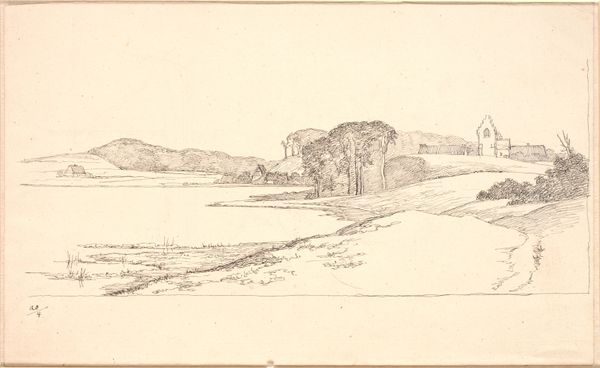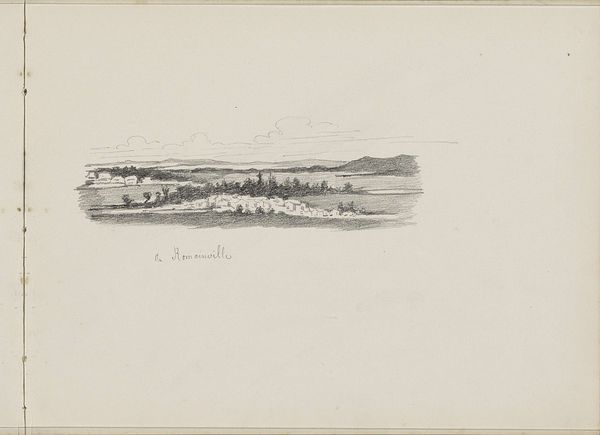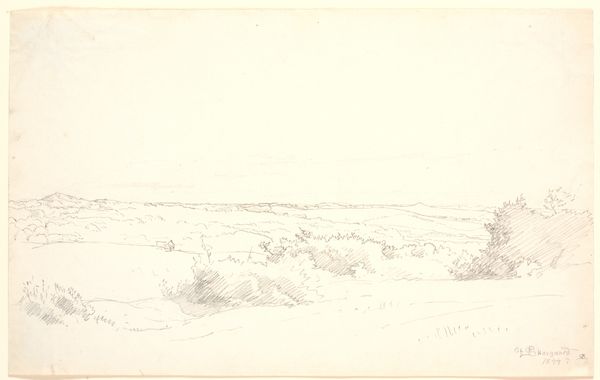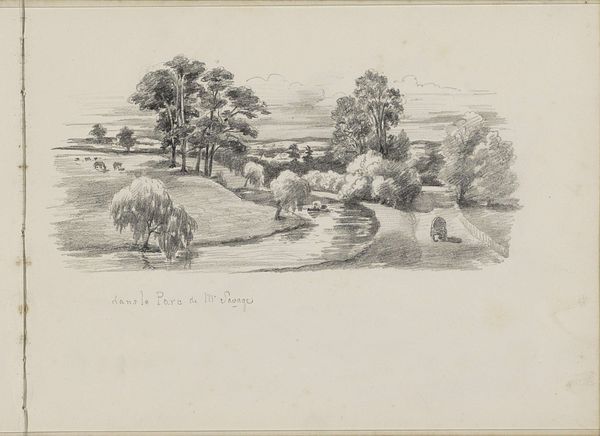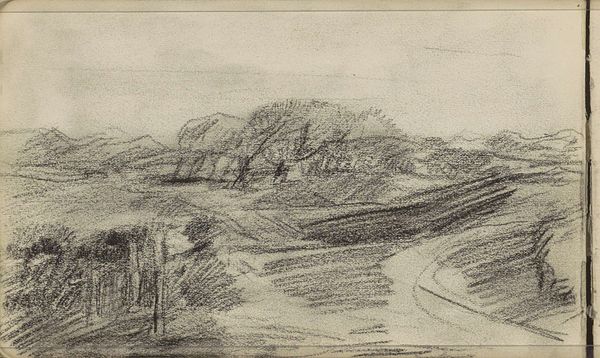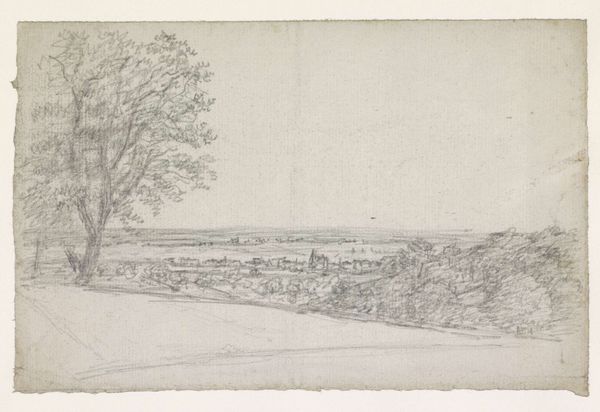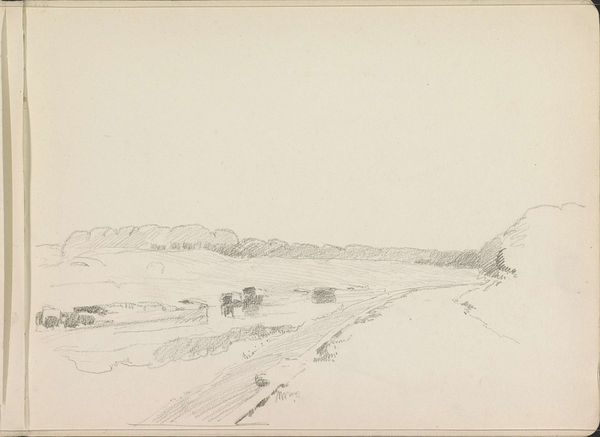
Dimensions: height 210 mm, width 275 mm
Copyright: Rijks Museum: Open Domain
Editor: This is "Gezicht op Romainville," a pencil drawing from 1858 currently held in the Rijksmuseum. The artist is unknown, and the drawing has a rather serene and understated quality. What historical or social meanings can we unravel from such a simple landscape sketch? Curator: A landscape, even a seemingly straightforward one, always invites deeper probing. Consider the time. 1858. Industrialization was rapidly changing the face of Europe. This "view" then becomes more than just a picturesque scene. Doesn't it suggest a yearning for an idealized rural past, perhaps even a critique of burgeoning urban sprawl and its social implications? What stories might this 'unnamed' artist be implicitly telling us through this chosen view? Editor: So you are saying the drawing invites us to think about the changes happening to land and labor, maybe even class distinctions arising between city and country? Curator: Precisely. Who had access to this ‘view’? Whose labor shaped this landscape? Notice how the sketch does not glorify industrial progress but rather centers on agriculture, and is done simply using pencil. This aesthetic choice, against the backdrop of emerging industrial society, speaks volumes about values, social hierarchies, and perhaps, a form of resistance against the tide of change. Could we even view this drawing as an early form of environmentalism, a quiet protest? Editor: I hadn't considered the social commentary embedded in what I saw as a placid landscape. Curator: It highlights how art acts as a social record and critique. It's not just what is shown, but what is intentionally, or unintentionally, omitted that holds cultural significance. Always question what ‘views’ are privileged, and whose stories remain unseen. Editor: This makes me want to know more about the area and the lives of people at this place at that time. Curator: Exactly, viewing the drawing as just a beautiful landscape is a lost opportunity; engaging it critically gives it its powerful, contemporary resonance.
Comments
No comments
Be the first to comment and join the conversation on the ultimate creative platform.

